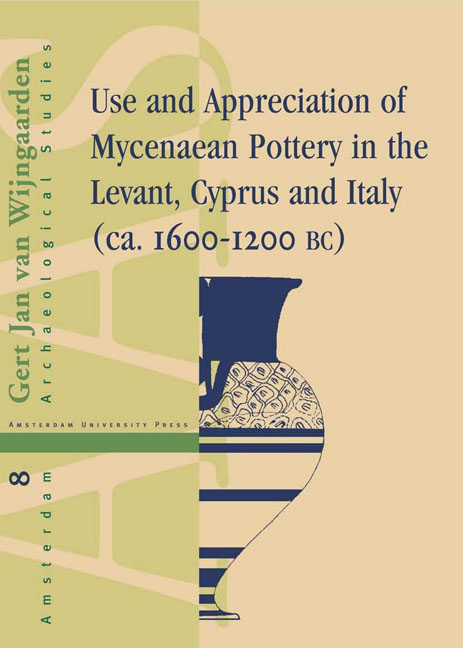13 - The Cultural Significance of Mycenaean Pottery in Cyprus
Published online by Cambridge University Press: 10 February 2021
Summary
I NTRODUCTION
The settlement at Enkomi covers virtually the whole Late Cypriot Bronze Age, whereas the occupation of Athienou and Apliki only took place in the later part of that period. Differences between the conclusions reached for Enkomi and the other two sites may be the result of developments in time. By including evidence from other sites in Cyprus such chronological patterns will become apparent. However, the differences and similarities between these sites may also be related to the variations in the specific roles of these settlements in Cypriot society during the Late Bronze Age.
MYCENAEAN REPE RTOIRE
Considerable differences have been observed between the quantity of Mycenaean pottery reported from Enkomi on the one hand and from Athienou and Apliki on the other. At least as much Mycenaean pottery as at Enkomi has been found at Hala Sultan Tekke (site no. 65), both from the settlement and from tombs. At Kition (site no. 63) substantial quantities of Mycenaean pottery have also been discovered: from tombs 4/5 and the two burial layers in tomb 9 came more than 300 LH IIIA2-LH IIIB vessels; large quantities of such pots have been discovered settlement levels as well. Smaller, but nevertheless significant amounts of Mycenaean pottery have been found in Kalavasos- Ayios Dhimitrios (site no. 114), Maroni-Vournes (site no. 116), Kourion-Bamboula (site no. 122)6 and Kouklia-Palaepaphos (site no. 126). There are no sites in the interior of the island which have pro duced more than 100 Mycenaean vessels or fragments thereof. Apparently, concentrations of large quantities of Mycenaean pottery were restricted to the urban coastal centres, which participated directly in international exchange networks. In spite of the high numbers of Mycenaean pots from the coastal towns, we should always remember that this material is only a fraction of the total of ceramic finds in both settlement and funerary contexts.
Apart from a larger quantity, Enkomi has also yielded a wider variety of Mycenaean pots than Athienou and Apliki. At Kition (site no. 63), a wide variety of Mycenaean storage vessels has been reported from tombs 4/5 and 9, including piriform jars, alabastra, stirrup jars and flasks. However, both tombs have produced many more Mycenaean dinner vessels, among which were kraters, jugs, cups and stemmed cups.
- Type
- Chapter
- Information
- Use and Appreciation of Mycenaean Potteryin the Levant, Cyprus and Italy (1600-120O BC), pp. 183 - 202Publisher: Amsterdam University PressPrint publication year: 2002



